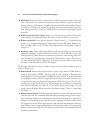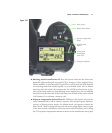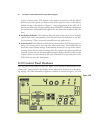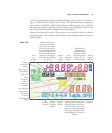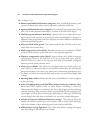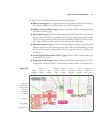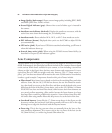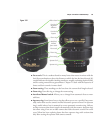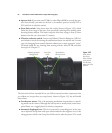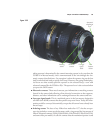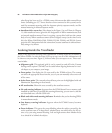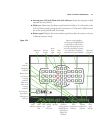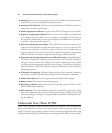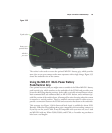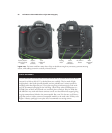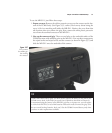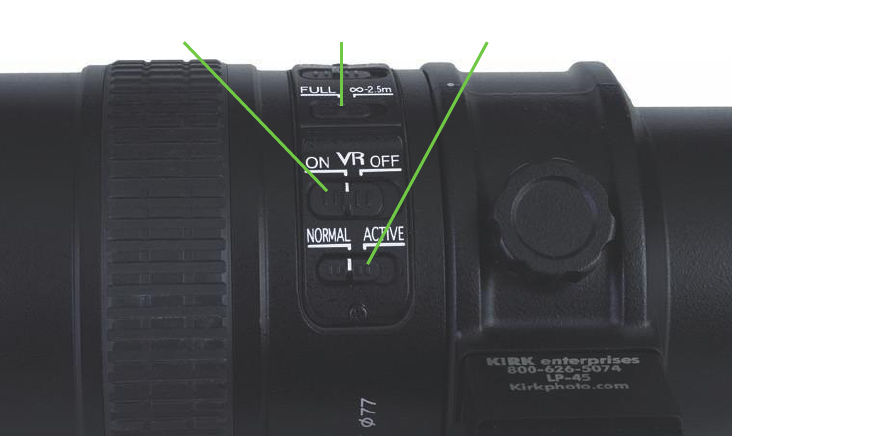
■ Aperture lock. If you want your D7000 (or other Nikon dSLR) to control the aper-
ture electronically, you must set the lens to its smallest aperture (usually f/22 or
f/32) and lock it with this control.
■ Focus limit switch. Some lenses have this switch (shown in Figure 3.32), which
limits the focus range of the lens, thus potentially reducing focus seeking when
shooting distant subjects. The limiter stops the lens from trying to focus at closer
distances (in this case, closer than 2.5 meters).
■ Vibration reduction switch. Lenses with Nikon’s Vibration Reduction (VR) fea-
ture include a switch for turning the stabilization feature on and off, and, in some
cases, for changing from normal vibration reduction to a more aggressive “active”
VR mode useful for, say, shooting from moving vehicles. More on VR and other
lens topics in Chapter 11.
David Busch’s Nikon D7000 Guide to Digital SLR Photography84
Figure 3.32
Some lenses
have focus
limit switches
and controls
for vibration
reduction (VR)
features.
Focus limit
switch
Normal/Active
VR mode switch
Vibration reduction
On/Off switch
The back end of a lens intended for use on a Nikon camera has other components that
you seldom see (except when you swap lenses), shown in Figure 3.33, but still should
know about:
■ Lens bayonet mount. This is the mounting mechanism that attaches to a match-
ing mount on the camera. Although the lens bayonet is usually metal, some lower-
priced lenses use a rugged plastic for this key component.
■ Automatic diaphragm lever. This lever is moved by a matching lever in the cam-
era to adjust the f/stop from wide open (which makes for the brightest view) to the
taking aperture, which is the f/stop that will be used to take the picture. The actual



